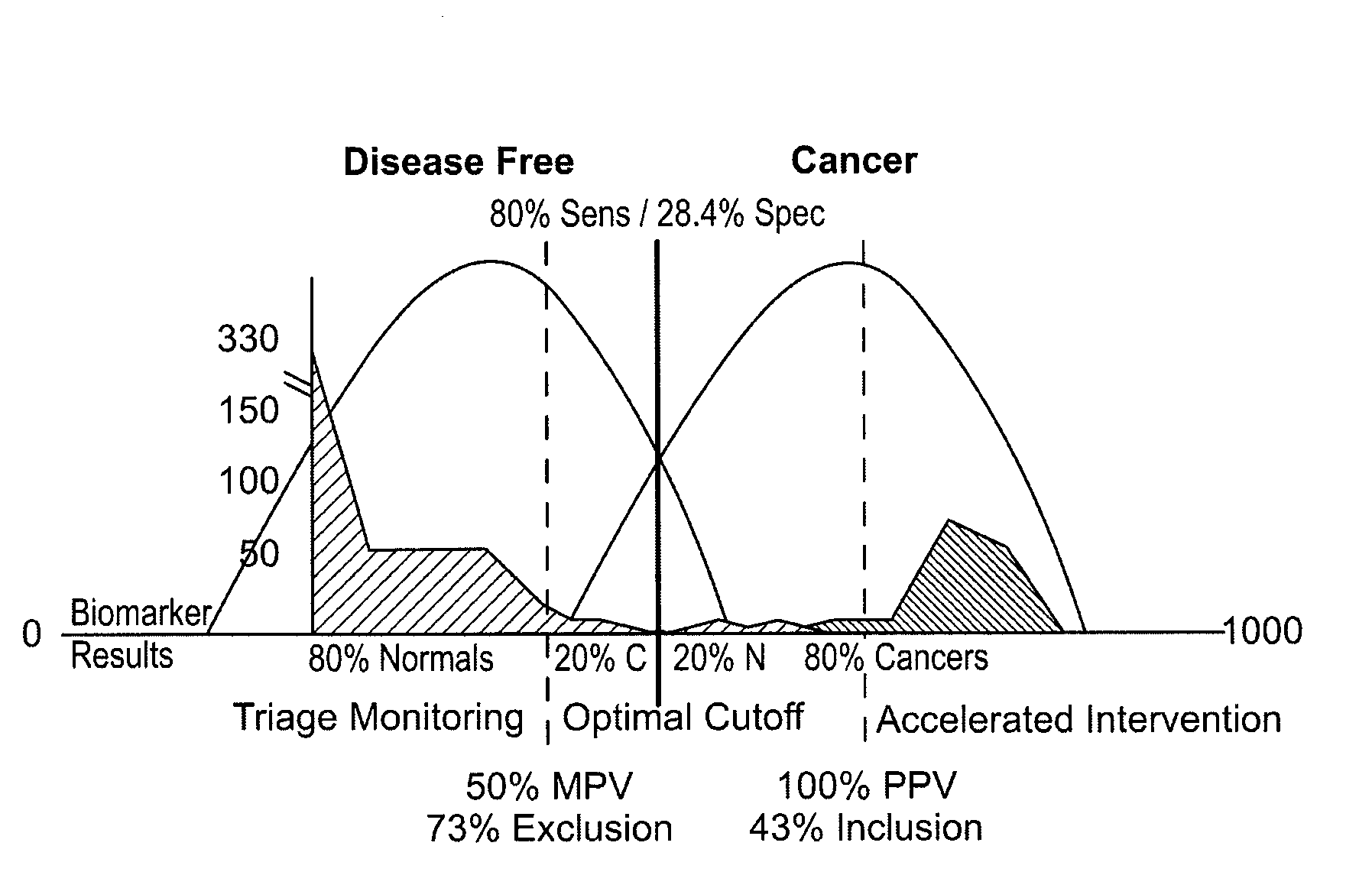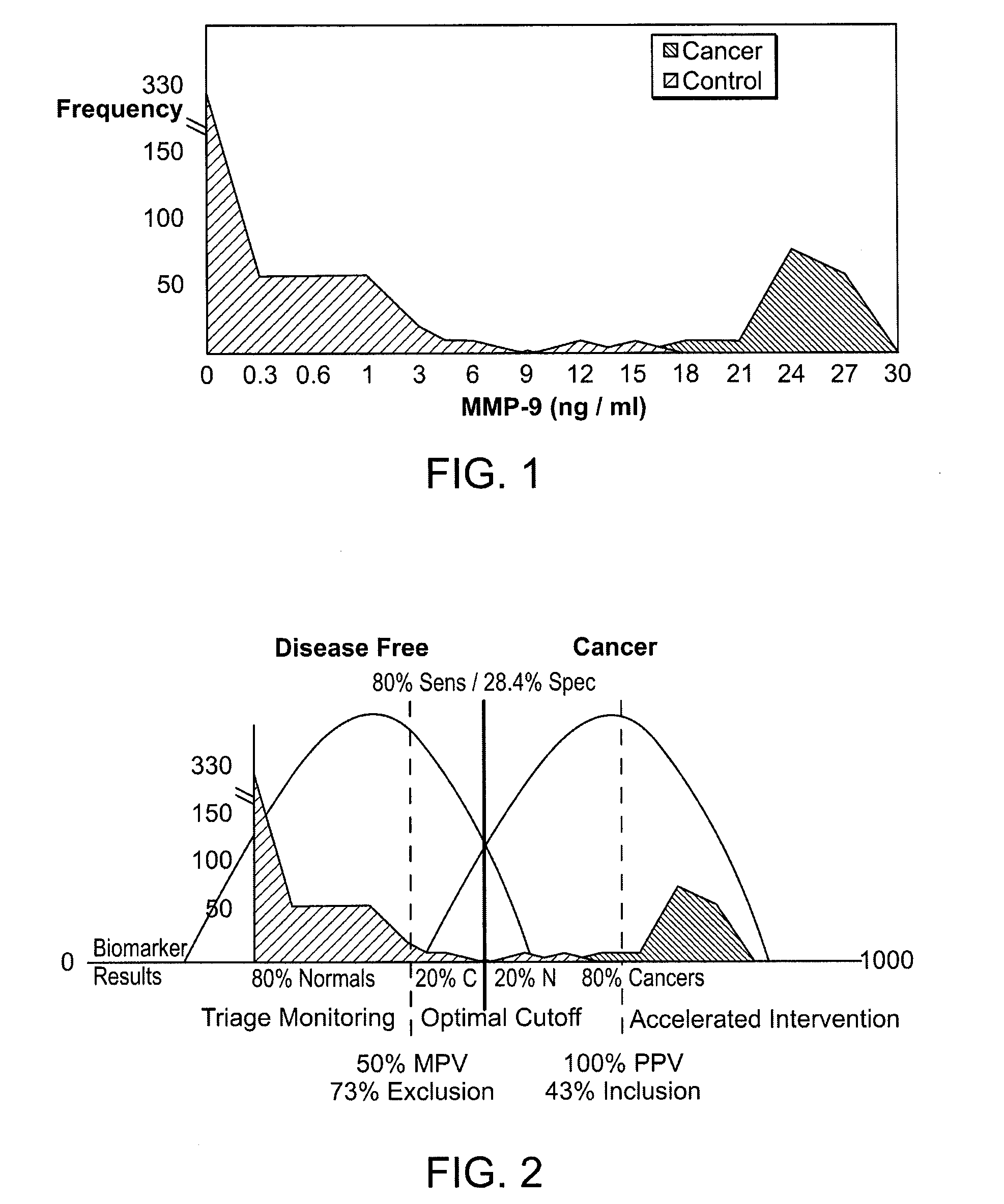Clinical Intervention Directed Diagnostic Methods
a diagnostic method and intervention technology, applied in the field of clinical intervention directed diagnostic methods, can solve problems such as uncertainty of standard screening assays, and achieve the effect of maximizing the number of patients
- Summary
- Abstract
- Description
- Claims
- Application Information
AI Technical Summary
Benefits of technology
Problems solved by technology
Method used
Image
Examples
example
[0022]Methods of the invention were applied to a cohort of healthy patients, cancer patients, and cancer-free patients presenting with a variety of other symptoms. Twenty-eight patients with cancer, 124 healthy patients, and 78 patients presenting with other symptoms were tested using methods of the invention in a blinded study. The table below shows the various groups of patients as categorized for the study.
Disease Indication (N)Cancer (28)Healthy (124)Infertility (6)Hernia (6)Erectile Dysfunction (14)Urinary Tract Infection (2)Kidney Stones (20)Urinary Incontinence (11)Hematuria (7)Diabetes (5)Bladder Obstruction (7)
[0023]Blood samples were obtained from all patients and levels of the matrix metalloproteinase, MMP-9, were obtained using a standard ELISA. As shown below in FIG. 1, differences in MMP-9 between cancer and non-cancer patients were statistically significant. Those differences enabled the acquisition of thresholds as shown in FIG. 2 in which non-cancer patients were un...
PUM
| Property | Measurement | Unit |
|---|---|---|
| threshold | aaaaa | aaaaa |
| threshold | aaaaa | aaaaa |
| threshold | aaaaa | aaaaa |
Abstract
Description
Claims
Application Information
 Login to View More
Login to View More - R&D
- Intellectual Property
- Life Sciences
- Materials
- Tech Scout
- Unparalleled Data Quality
- Higher Quality Content
- 60% Fewer Hallucinations
Browse by: Latest US Patents, China's latest patents, Technical Efficacy Thesaurus, Application Domain, Technology Topic, Popular Technical Reports.
© 2025 PatSnap. All rights reserved.Legal|Privacy policy|Modern Slavery Act Transparency Statement|Sitemap|About US| Contact US: help@patsnap.com


